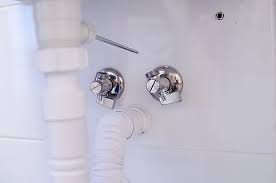
In the world of plumbing, there are certain components that often go unnoticed until a problem arises. The toilet shut-off valve is a prime example. This seemingly simple device plays a crucial role in your bathroom’s plumbing system, ensuring smooth operation and preventing potential disasters. In this article, we’ll delve into the significance of a toilet shut-off valve, its functions, maintenance, and why understanding it can save you from plumbing nightmares.
The Role of a Toilet Shut-Off Valve: At first glance, a toilet shut-off valve may appear insignificant, but it’s a key player in your plumbing setup. This valve is responsible for controlling the flow of water to your toilet tank. It’s like the gatekeeper of your bathroom’s water supply, allowing you to shut off water to the toilet whenever necessary. Whether you’re making repairs, performing maintenance, or dealing with an emergency, the shut-off valve gives you the power to control water flow efficiently.
Functions and Importance:
- Emergency Preparedness: Imagine a scenario where your toilet starts overflowing uncontrollably. Without a functioning shut-off valve, you’d be scrambling to turn off the main water supply to your house. The toilet shut-off valve provides a localized solution, allowing you to quickly stop the water flow to the toilet without affecting other areas of your home.
- Repairs and Maintenance: When it’s time for repairs or maintenance on your toilet, having the ability to isolate the water supply is invaluable. The shut-off valve eliminates the need to disrupt water supply to the entire house, making plumbing tasks more manageable and efficient.
- Water Conservation: A leaking toilet can waste a significant amount of water over time. A faulty shut-off valve might not completely stop water flow, contributing to water wastage and increased bills. Keeping the shut-off valve in optimal condition helps you prevent unnecessary water usage.
Maintaining Your Toilet Shut-Off Valve: Maintaining your toilet shut-off valve is relatively simple and can save you from potential headaches down the line. Here are some maintenance tips to consider:
- Regular Inspection: Periodically check the valve for any signs of leaks, corrosion, or difficulty in turning. Addressing minor issues early can prevent major problems later.
- Operational Tests: Test the shut-off valve by turning it on and off a few times. This helps prevent it from getting stuck due to infrequent use.
- Replacement: If your shut-off valve is old, corroded, or malfunctioning, consider replacing it with a new one. It’s a small investment that can save you from water damage and costly repairs.